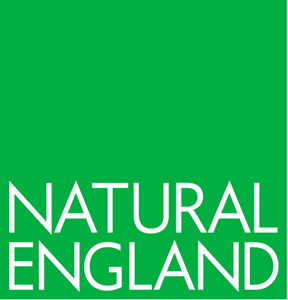Annex A1: updating minimum and maximum numbers during 2024 badger control operations
Published 11 June 2025
Applies to England
Background
In 2024, as in previous years, it became apparent from daily data collected through the course of badger control operations and actual circumstances being observed in the field, that there was a wider variation in badger abundance across the control areas than it had been possible to estimate prior to the control operations. Specifically, some badger control companies were encountering and removing more badgers than expected and some were seeing and removing fewer despite equivalent amounts of effort deployed by similarly trained contractors.
This necessitated updating of the minimum and maximum numbers for 18[footnote 1] control areas following the advice published by Defra in October 2024 (Section D)[footnote 2].
Updating numbers in Areas 55 to 72
The method used to update the minimum and maximum numbers has not been changed since 2017 but has been improved to take into account further data from effective first year control areas[footnote 3] and effective second, third and fourth year control areas in previous years.
For all areas the minimum and maximum numbers were recalculated using an historical comparator. Taking data from the previous years’ effective control areas, the proportion of the Day 42 cull total that was achieved on each day in each area is calculated, then averaged across areas to generate the historical comparator. This allows the prediction of the expected Day 42 total for any area, from any given day. The minimum and maximum numbers are then set equidistant around the expected cull total.
The updated minimum and maximum numbers in 17 Areas[footnote 4] were further increased by 1.5% per operational day, to account for their desire to continue beyond 42 days in order to maximise disease control on land parcels where factors such as late maize harvest or poor weather conditions hampered coverage.
The data used to calculate the minimum and maximum numbers is taken from Day 28 of operations and this data and the resulting updated numbers are presented in Table 1.
In the first few weeks of operations, it became apparent that in 2 areas there were considerably more badgers than the initial sett survey population estimate had suggested. The numbers were therefore updated in Area 58 - Staffordshire to a minimum of 208 and a maximum of 282 and in Area 70 - Somerset to a minimum of 54 and a maximum of 73 using the methodology explained above. These numbers were updated again based on data from Day 28.
Table 1: Data for updating minimum and maximum numbers in Areas 33 to 72 during 2024 badger control operations[footnote 5]
| Area | Day | Effort | Badgers removed by Day 28 | Updated minimum number | Updated maximum number |
|---|---|---|---|---|---|
| Area 54- Lincolnshire | 28 | 64.0 | 38 | N/A | N/A |
| Area 55- Shropshire* | 28 | 46.1 | 43 | 58 | 79 |
| Area 56- Hampshire* | 28 | 61.7 | 173 | 188 | 256 |
| Area 57- Berkshire* | 28 | 69.2 | 66 | 73 | 99 |
| Area 58- Staffordshire* | 28 | 73.9 | 245 | 267 | 363 |
| Area 59- Worcestershire* | 28 | 69.3 | 95 | 105 | 142 |
| Area 60- Shropshire* | 28 | 51.5 | 503 | 669 | 908 |
| Area 61- Oxfordshire* | 28 | 55.3 | 146 | 210 | 285 |
| Area 62- Buckinghamshire* | 28 | 66.4 | 349 | 383 | 520 |
| Area 63- Cornwall | 28 | 66.0 | 131 | 138 | 187 |
| Area 64- Cornwall* | 28 | 82.9 | 113 | 120 | 163 |
| Area 65- Derbyshire* | 28 | 70.2 | 385 | 419 | 569 |
| Area 66- Devon* | 28 | 59.5 | 68 | 75 | 102 |
| Area 67- Hampshire* | 28 | 86.0 | 146 | 157 | 214 |
| Area 68- Northamptonshire* | 28 | 57.4 | 528 | 623 | 846 |
| Area 69- Oxfordshire* | 28 | 45.7 | 132 | 180 | 245 |
| Area 70- Somerset* | 28 | 56.2 | 58 | 63 | 86 |
| Area 71- Warwickshire* | 28 | 56.2 | 210 | 247 | 335 |
| Area 72- Warwickshire* | 28 | 50.6 | 408 | 545 | 739 |
| Area 73 - Cumbria | 28 | 138.1 | 456 | N/A | N/A |
-
Area 54- Lincolnshire and Area 73- Cumbria did not have minimum and maximum numbers. ↩
-
https://www.gov.uk/government/publications/advice-to-natural-england-on-setting-minimum-and-maximum-numbers-of-badgers-to-be-controlled-in-2024. ↩
-
All third and fourth year area calculations are based on all historical yearly area data. ↩
-
For Areas listed with ‘*’ the minimum and maximum numbers presented in Table 1 exclude the further increase by 1.5% per operational day. ↩
-
For areas in their third and fourth years of control, required effort was relative to the abundance of badgers reported in the area, with a recommended target of 64 units per 100km2 per night over 42 days of operations. As some areas choose to continue beyond 42 days to maximise disease control benefits, all areas expended an appropriate level of targeted effort across their control area. ↩

